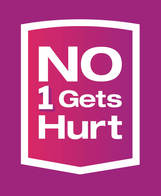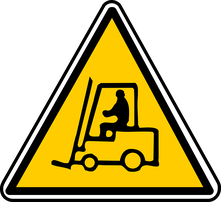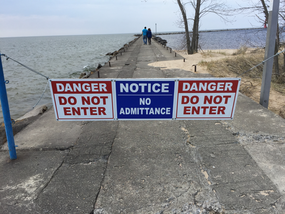 I can still remember it today. My first job as a safety manager for a manufacturer that had operations in four states, Canada and Mexico. Very exciting, and what a great opportunity for me to spread my wings …… that is until I started the job and discovered that my predecessor had been a safety Nazi and that the safety culture was old-school and just plain sour. I mean some people did not even want to be seen talking to me. I was seen as just another person who was going to tell them they could not make changes. On top of that, upper and middle management were not too keen on spending money implementing safety. Ya know it was just one of those “Soft” programs that take away from our bottom line, right? Argh!! I was questioning my career choice about that time. But I also saw an opportunity to grow and mature in the field and knew that I wasn’t the only person experiencing these problems. After all these years, I now see that my choice was a good one. However, I still run across companies with these same challenges. How do you get people (hourly and management) to “want” to talk about and implement Safety if they have never been educated as to the financial and production benefits? What do you do when they have been made to see Safety as something they have to do, instead of something that can improve the bottom line and make the factory floor a place where people enjoy working. In this newsletter series I will share with you some challenges I have encountered and some proven techniques I have used and have seen as effective over the 30 plus years I have been in the Safety business. Communication In those famous words spoken in the movie Cool Hand Luke “What we’ve got here is a failure to communicate,” one sees the challenge of an EHS professional. Ok, that’s a bit dramatic, but some days can be like that, right? Everybody is rushing around trying to get product out the door and doing everything in their power to get out of work on time to attend their kid’s soccer game or music recital or get to dinner or the bar. They don’t have time to listen to what YOU, the Safety person, have to say. Then, without warning, someone stops you and asks a question. And you think, this is your big chance to talk to someone about safety or environmental topics. To sell safety and even educate someone on EHS topics. Stop, breath, and think before you talk. Who is your audience? What is really important to this person? How much do they know about the topic in question? What priorities or hot button issues does their department have? What would you like to teach them about the topic or requirements? Selling Safety – One of the first things I tell new safety staff is that they need to always be ready to sell (and educate) people about safety. The worse thing we can do is be unprepared to answer questions. And we need to take our time in answering the questions as they come. After all, we are often in a hurry to get to a meeting, too. So we may not take the time necessary to really answer the person’s questions and make them a safety convert. Compound Interest – Think of safety converts this way. If you can convince one person a week that safety is worth their time and effort, in a year there will be 52 converts. Because people talk to each other, each of the converts will eventually convince a person or two or more, that safety is something worth their time, and before you know it half of the factory floor is part of your safety army. And, if your strategy includes influencing the influencers, then you can really get good results. The influencers are those people on the shop floor who are looked up to for one reason or another. They are leaders, outspoken, friendly to most people and may be quite popular. They can be line workers, line assistants, supervisors and others up the food chain. If they become converts, you’ve got it made. You’ve just multiplied your safety sales force. … a legal pyramid scheme! Avoid Regulatory Jargon - Try to keep the jargon and regulatory chatter at bay. Otherwise you might notice their eyes start to glaze over … you know, you’ve seen it… they’re still smiling but the words are not registering anymore. It doesn’t matter how many degrees or certifications you have, if someone doesn’t understand what you’re saying, the message will not get through. So, speak to people in their own language, free of our EHS jargon. Dosage – As EHS professionals we are concerned with risks associated with exposure, and exposure is measured in dosage. When talking to non-EHS professionals, always consider the size and complexity (doses) of information you provide at any one time. Use language that they understand, not regulatory jargon or text book talk. For example, dole out information in sound bites that people can digest and easily repeat to others in their department. If you are having problems with people using too many extension cords say something like this: About 1/4 of all industrial structure fires are caused by electrical distribution and lighting equipment. While this NFPA statistic does not call out extension cords specifically, a connection can be made and a seed of concern can be sewn (or planted) in a simple sound bite. Engage People – For years OSHA has said that involving workers in EHS activities and decision-making causes them to care more about and implement changes. We see that in our Lean Manufacturing and 5S scenarios too. EHS changes created through employee involvement last longer than if we just tell people to do it. The reason for this is that they now have ownership of the change. So, when an employee complains and asks why they have to do something a certain way, start with asking them to show you the issue at hand. This gets people engaged on the topic and will help you understand the scenario and where the issue is located. Ask them their opinion and about possible solutions to the problem, whether the answer is obvious or not. People have lots of opinions and are happy to share them with you. This engagement helps you build a relationship and provides an opportunity to discuss with them the physical and regulatory aspects of the issue and people can start to see and appreciate more sides to the issue. Empathy – Safety professionals have to practice looking at every disagreement situation from the other person’s point of view. If you can see their point of view and why they feel the way they do, then you will have an insight into how to effectively communicate with them, and what information may be useful during the communication. There is usually a little tenuous history associated with workplace situations, some that have existed for years. Sometimes you can work around these tenuous issues and sometimes you can’t, but talking about them almost always helps. Effective listening is one way to show empathy. Effective Listening – Speaking of effective listening, everybody wants to be heard. Employees in a big factory tend to get lost in the hustle and bustle of getting those orders out. Depending on the quality of their supervisor they may withdraw and lay low just to get through the shift. Effective listening means spending the time, eye contact, asking follow-up questions, paraphrasing what you heard and parroting. All these communication techniques help tell the person that you are listening and you care about their opinion. Patience – Many people don’t like change. As a result, sometimes you need to give people some extra time to let the change sink in and get comfortable with the idea. It’s a time for you to put your communication skills to work. If it’s a change in PPE requirements, sometimes it takes a little more effort like stopping in a day or two after the change to see how the PPE is working. I participated in a situation where we upgraded PPE for a cleaning line and added face shields and nitrile aprons to protect worker’s skin, eyes and clothing from caustic cleaner. There was one particular worker who hated the change and he was outspoken and not easy to talk to on a good day. So, being the caring safety professional that I was, instead of hiding in my cozy office, I made a point of heading out there in the middle of the next shift to see how he was doing. Well, I got an earful as soon as I arrived at the workstation. Too hot, can’t see, the cleaner was still getting on the person’s face. So, I left and went back to my cozy office ….. to get a note pad to do another Job Safety Analysis. But this time the JSA was not so much on the work station and the PPE, but rather on how the person was performing the job with the equipment and PPE assigned. I was patient and let the worker explain his side, I showed empathy and we objectively looked at it from all sides - together. What we found was that the person was being reckless with the cleaning equipment, causing lots of overspray, and he kept touching his face with his glove that had caustic cleaner residue on it. Long story short, we talked, I listened, he listened. With the supervisor’s participation we made some changes to the work station that the worker suggested, and he made some adjustments on how he did his job, and he promised to try harder to keep his hands away from his face. And, after a few more days, he was not so grumpy and not having any problems. In fact, he later became an assistant line leader and he was tasked with helping other workers at that same workstation avoid some of the problems he encountered. He became part of the solution. He was selling safety! And, you know what else? He stopped being the grumpy complainer and started coming up with other improvements to the line that actually made it run better! But, remember, what led to that was an opportunity for him to be heard and become part of the solution and take ownership of the solution. Hey, maybe employee participation works after all! Next time … How Important is Your Attitude Toward Other People? Author: Bill Schneider, CHMM  Every year in June the National Safety Council leads the nation in National Safety Month. This year’s theme is “No 1 Gets Hurt”. National Safety Month focuses on reducing leading causes of injuries and deaths at work, on the road and in our homes and communities. The NSC provides a lot of information on various safety topics. This year’s topics are:
Get the safety materials here.  A forklift operator was recently sentenced to 2 ½ years in prison for the forklift death of another contract worker at the Honda R&D Americas facility in Raymond, Ohio. The incident took place two years ago. When tragic incidents like this happen we need to ask what message should this verdict send to safety managers, supervisors and employers? While we don’t have OSHA’s write-up, we can look at the facts as presented in the news story. The operator was known to drive through stop signs and drive forward when he had a load that blocked his view in front of the forklift. These two unsafe work practices are what lead to the accident. I would bet that everyone who has worked at a factory or warehouse for 2 years or more has seen this type of behavior at least once. And, that supervisors and managers know who the culprits are. The question is, what should companies do about this poor safety behavior? And, how long should the behavior be allowed to continue before effective intervention occurs? Having been a safety manager, this story sent a chill up my spine. I hope it also sends a chill up the spine of every business owner, manager, supervisor and safety manager out there. Not because I enjoy seeing people sweat, but because too often I see companies on the surface claim “Safety First”, but behind the scenes they don’t always “walk the walk” by engaging their employees and contractors about safety and enforcing their own safe work practices. Conversations about safety must occur regularly among hourly and management employees and contractors, training has to be up-to-date and relevant and safe work practices must be enforced consistently as part of every company’s culture. In this way, all employees are engaged in safety, and not just paying it lip service. Research has shown us that employers who engage their employees and contractors about safety actually discourage poor behaviors and eliminate opportunities for preventable incidents like this one. This is a chilling story and one that I hope never happens to any of our readers. But I also hope that it will serve as a reminder to everyone that if we as business managers let things go too far and don’t intervene, we can expect to see tragic incidents like this one happen again. I encourage everyone reading this article to download the news story and share it with supervisors and managers, and discuss the high personal loss for family and friends and the legal ramifications for individuals and the companies associated with the incident. And, ask the tough questions. How is our safety culture? Do we monitor effectively for unsafe work practices or unsafe conditions? How well do we interact with our contractors about safety? The local news story can be found here.
So, what is really going on here in this photograph? Some might say that taking a walk on a crumbling structure is a small risk to take to be able to accomplish what they are trying to accomplish, in this case a beautiful walk with no one else around. After all, if they pay attention to where they step and walk in the right places, they “should” be safe, they should be ok…. Right? Ignoring the Danger sign could be considered a small calculated risk.
Safety professionals and supervisors cringe when they are confronted with this type of situation. And, it comes in many different flavors:
So, what do we do when people ignore caution and danger signs? What do we do when people do not follow established procedures? Is it a cultural thing? Is it controllable? The answers are an absolute yes and maybe. Risk taking is in our blood after all. And our culture encourages taking risks. We are encouraged to save time, be macho, work faster, be creative, and impress the boss. We have come to depend on behaviors to fit in, to get noticed and be part of the gang. So what is a manager to do? Take Baby Steps - Changing people’s behavior, and thus the culture, in any situation is a process, it doesn’t just happen. Cultural change needs to be promoted and nurtured with lots of patience over a healthy period of time, such as one to two years or more. Sometimes it will even take a change in personnel to eliminate roadblocks. Recruit Upper & Middle Management Support – From the President, CEO, and the COO on down, support is needed before you can even think about changing your safety culture. The new safety goal must be sold to and agreed upon by top management or it will fall flat. And, make sure upper management walks-the-walk. In other words, make sure they agree to abide by the same principles you are promoting to everyone else in the company. Sometimes it will be as simple as wearing safety glasses when someone is on the shop floor. Other times it will be making decisions that put safety ahead of loading a truck with equipment that should be out of service. Management should be coached to be proactive with safety repairs and look for alternatives, like borrowing a forklift from another department. This may seem obvious, but even seasoned production staff end up in organizational silos when it comes to their department and their priorities. Get Supervisor Buy-in – Make sure management helps you sell and promote the concept to supervisors who are brutalized daily to make production quotas. Supervisors will need to know that safety cannot be sacrificed because of production goals. This will take time for everybody to accept and get use to. And, there will be some that fall off the wagon on the way to achieving that goal, but that should be expected and can be handled in a positive way as a problem-solving opportunity for improvement. Recruit Influencers – Influencers are the popular people, people who other workers look up to or look to for advice about work. Getting them on board can be tricky but can help sell the change at the grass roots level. One way to get them involved is to include them in, or put them in charge of a safety committee whose task it is to help with the cultural change. Maintenance and Facility Manager Buy-In – We should all know by now that keeping equipment and the facility in good working order is a challenge like no other. Often times this part of a company marches to a different drum beat than the production side of the business and they have their own set of unique challenges. Make sure that this group is included in your management, supervisor and influencer buy-in group and that your change plans consider their unique position in helping production fill customer orders on time. After all, maintenance will be the ones replacing machine guards and repairing faulty switches, fixing storage rack supports and replacing worn out wiring, installing the safety signs, mirrors and lighting, to name a few. Be Methodical & Be Positive – Like any good manufacturing project, plan the work and work the plan. Target the unsafe conditions and behaviors in your facility carefully and systematically. Prioritize them based on the frequency and severity of the hazards. Turn an unsafe situation into an operational improvement opportunity. Ask the people exhibiting the unwanted behavior to develop a solution to do the task better, safer and even faster! In most manufacturing environments, employees usually know the problems and solutions before the questions are asked by management. Turn your employees’ problem-solving energy loose in a positive way - to come up with a solution - and everybody wins! So, let’s look at unsafe behaviors with a fresh set of eyes and as opportunities for improvement, and not just another disciplinary problem. Get your management support structure in place and set the employee’s problem-solving energy loose! When employees come up with the solutions, changes are more likely to be adopted and maintained over the long haul. And that is real cultural change! I would bet that you will find that many of the employees wanted to see the change anyway. |
|


 RSS Feed
RSS Feed
